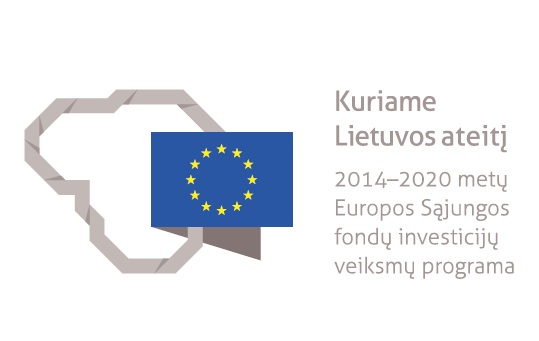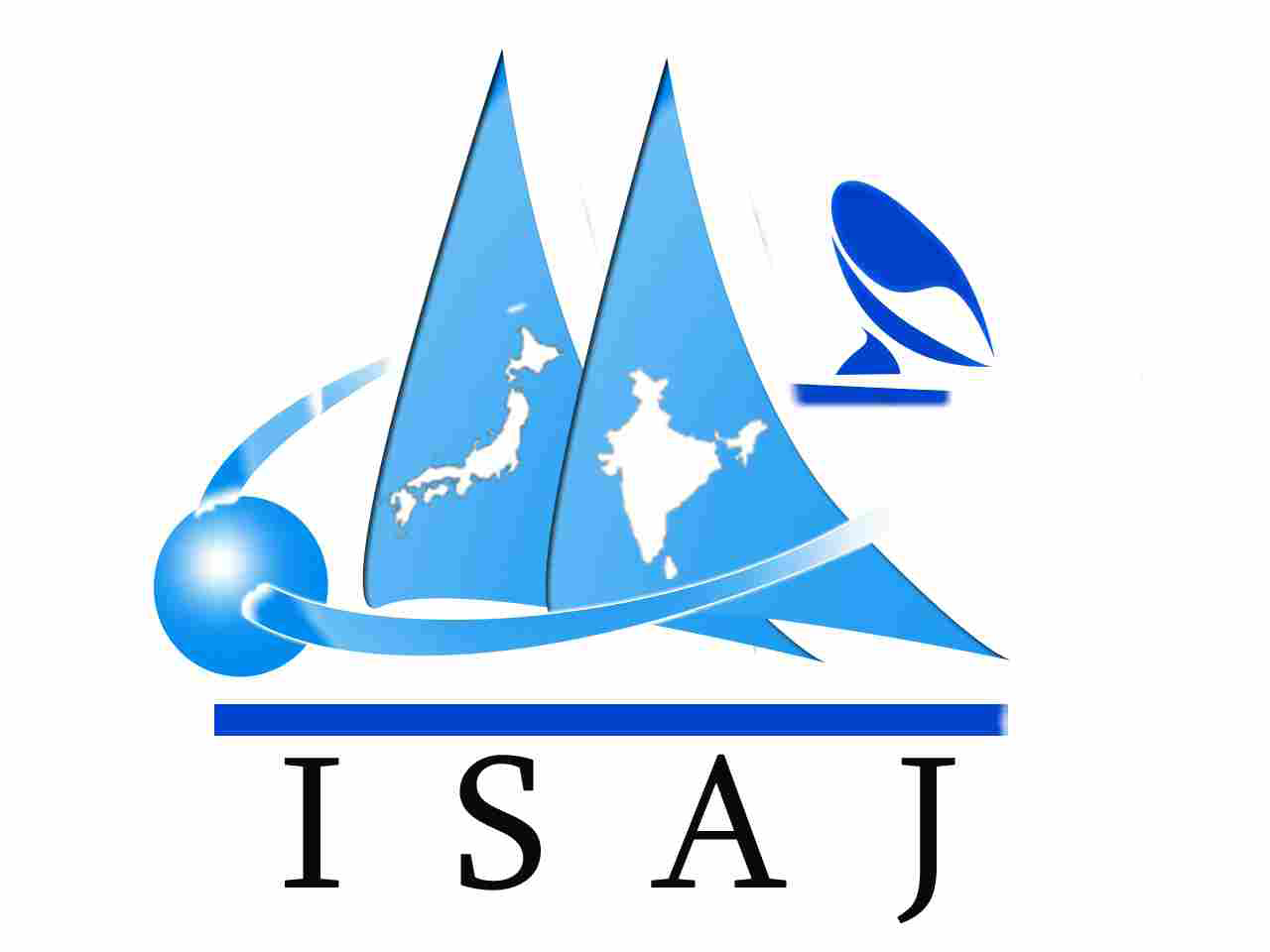THE LITHUANIAN MAP OF CORRUPTION 2016 IN SEPTEMBEROCTOBER 2016
13 REGULATIONS OF THE LITHUANIAN NATIONAL SECOND GENERATION SCHENGEN2 LITHUANIAN SPORTS UNIVERSITY REPORT ON DOCTORAL STUDIES AND
ACCOUNT DETAILS CONFIRMATION IN THE LITHUANIAN PART OF THE
AGREEMENT BETWEEN THE LITHUANIAN PARLIAMENTARY PARTIES REGARDING THE DEFENCE
ATTENTION MEMBERS OF THE LITHUANIAN COMMUNITY! THIS YEAR’S LITHUANIAN
Download?assetUrl=%2Fsites%2Fwebpublishing%2FProject%20Documents%2F61%2FCL22%20-%20DP%20Insurance%20contract%20DCL%20Lithuanian%20standard-setter

THE LITHUANIAN MAP OF CORRUPTION 2016
In September-October 2016 a public opinion and market research center “Vilmorus“ conducted a study "The Lithuanian Map of Corruption 2016“, initiated by the Special Investigation Service of the Republic of Lithuania. The study is a part of the project "Implementation of the survey “The Lithuanian Map of Corruption", development and implementation of anti-corruption social advertising system", co-financed by the European Social Fund under the 2014-2020 European Union investment operational program.
Three target groups were researched: Lithuanian residents, business executives and civil servants. A total of 1,002 residents of Lithuania, 503 business executives, 502 civil servants were surveyed.
The aim of the research - to assess the corruption situation in Lithuania and compare it with results from previous years. The research objectives: to assess the target group approach to corruption, the incidence of corruption in various institutions, to identify corruption practices of the respondents and evaluate the potential of anti-corruption.
Lithuanian residents place corruption on the 5th place among the most acute problems, after low-wage, emigration, rising prices, alcoholism. 56% of the population indicated corruption as a very serious problem. This percentage is higher in comparison with year 2014 (48%, sixth place) ), yet less than in 2015, 2007 and 2011. Business leaders mentioned corruption, as a very serious problem, in the 5th place – 35% (in 2014 – 30%, 5th pace) and civil servants – in the 6th place – 32% (in 2014 – 29%, 7th pace). All three groups mentioned corruption more often compared to 2014. The increasing perception of corruption as a problem was determined by the resonant corruption incidents in 2016. Entrepreneurs were also asked about the problems impeding business. Corruption was mentioned in the 5th place following emigration, tax rates, the lack of skilled staff and the lack of transparency in public procurement.
There is increase in the population estimates that Lithuania encounters a widespread corruption situation when a political party promises to make useful decisions if an entrepreneur provides financial support (from 29% in 2014 to 36% in 2016.). The most common corruption situation mentioned by the residents and civil servants - employment based on acquaintances (respectively 38% and 28% indicated the problem as a widespread).
Corruption as a phenomenon is assessed negatively by all target groups. There is a declining number of entrepreneurs who, for whatever reasons, justify corruption: "it reduces the time for administrative procedures“ (from 27% in 2014 to 23% in 2016), this "lubricates" inefficient state machanisms (from 24% to 21%), this compensates small salaries of state employees (from 19% to 14%).
42% of Lithuanian residents think that the extent of corruption has grown in 5 years, 31% think that it remains unchanged and 14% think that it has decreased. In 2008, the percentage of those who believe that the extent of corruption within 5 years has increased was 77%, in 2011 - 53%, in 2014 - 35%, i.e. from year 2008 to year 2014 the tendency of improving assessments was observed, while in the last two years the number of negative evaluations increased by 7 percentage points. The evaluation of the past 12 months dynamics has also deteriorated. In 2005, those who believe that the extent of corruption within 12 month increased consisted 64%, in 2007 - 54%, in 2008 - 66%, in 2014 - 26%, in 2016 - 36%. Regarding the future, there are slightly more pessimists (20%) than optimists (18%). Business executives and civil servants provided more positive responses than the residents, but estimates are worse compared to 2014 (exception - future assessments by civil servants - here a significant increase in the number of optimists).
In an open question about the most corrupt institutions, the residents most frequently mentioned health care institutions (51%), the Seimas (42%), the courts (37%). In many cases, various institutions have been mentioned more frequently. Business leaders and civil servants most frequently mentioned health care institutions, but also - the Seimas and municipalities.
In a closed question about corruption in various institutions, the Seimas and the parties received a majority of "highly corrupt" assessments in all target groups. In the course of two years the evaluations have deteriorated. Meanwhile, the evaluation of the Prosecutor's office, the Special Investigation Service (STT), the State Security Department (VSD) has improved.
Residents assessed a corruption level of specific ministries and institutions. The following institutions received a majority of assessments as "highly corrupt" (over 20%): the Ministry of Health - 29% (in 2014 - 26%), the Ministry of National Defence - 22% (in 2014 - 5%), district courts - 21% (in 2014 - 22%), the State Territorial Planning and Construction Inspectorate - 33% (in 2014 - 26%), Ignalina Nuclear Power Plant - 28% (in 2014 - 26%), the State Energy Inspectorate - 22% (in 2014 - 14%), the Lithuanian Oil Products Agency - 22% (in 2014 - 20%), the Customs Department - 32% (in 2014 - 34%), „Lietuvos energija“ - 29%, the Gaming Control Authority - 23% (in 2014 - 19%), Procurement department at the Ministry of National Defence - 28% (in 2014 - 11%), Procurement departments in municipalities - 25% (in 2014 - 28%), the Disability and Working Capacity Assessment Office - 47% (in 2014 - 41%), the Departament for the Affairs of the Disabled - 21% (in 2014 - 13%), the State Medicines Control Agency - 36% (in 2014 - 29%), national hospitals - 35% (in 2014 - 36%), urban and regional hospitals - 31% (in 2014 - 33%), clinics - 23% (in 2014 - 24%), the National Health Insurance Fund and its territorial branches - 22% (in 2014 - 16%), traffic police - 24% (in 2014 - 33%), the Public Procurement Office - 37% (in 2014 - 24%), the State Food and Veterinary Service - 25% (in 2014 - 12%), the National Land Service - 31% (in 2014 - 17%), the National Paying Agency - 24% (in 2014 - 18%), pharmaceutical companies - 24% (in 2014 - 25%), bailiffs - 21% (in 2014 - 19%).
Most of the residents (68%) believe that a bribe helps to solve problems. This is the lowest result since 2008 (in 2008 – 75%, in 2011 – 79%, in 2014 – 69%). 40% of the population are apt to give bribes in order to solve their problems (in 2005 – 68%, in 2007 – 67%, in 2008 – 64%, in 2011 – 57%, in 2014 – 48%). In comparison with 2014, the number of people inclined to give a bribe has reduced from 48% to 40%. 48% of CEOs agree that bribes facilitate to solve problems (which is more than in 2014 - 43%), however, it is significantly less that in 2008 – 75% and in 2011 – 65%. 20% of CEOs would give a bribe and this is the lowest result since 2002 (in 2002 – 63%, in 2004 – 67%, in 2005 – 55%, in 2007 – 42%, in 2008 – 51%, in 2011 – 40%, in 2014 – 21%). 45% of civil servants stated that bribes help problem solving; it is less than in 2014 (54%). 12% of civil servants indicated they would give a bribe; it is less than in the previous years (in 2014 - 23%, in 2011 - 35%).
Over 12 months period 16% of the population have given bribes (in 2005 – 27%, in 2007 – 28%, in 2008 – 24%, in 2011 – 22%, in 2014 – 24%), and over 5 years period - 33% (in 2002 – 42%, in 2004 – 36%, in 2005 – 48%, in 2007 – 47%, in 2008 – 44%, in 2011 – 41%, in 2014 – 45%). This is the lowest result since 2002. 5% of company representatives have given bribes over 12 months period and 15% - over the 5 years. The figures remain almost unchanged compared to 2014, however, it is one of the lowest since 2002. 6% of civil servants stated that over 12 months period they have given a bribe, which is significantly less than in 2014 (17%). There is a decline in bribery over the 5 years period as well (from 35% to 19%).
Among the intensily visited institutions, the highest bribes extortion and giving indexes are recorded in urban / regional hospitals, national hospitals. However, the situation has improved compared to 2014. If the bribe extortion index in city/district hospitals in 2014 amounted to 0,53, in 2016 it was 0,36; in national hospitals the respective indicator dropped from 0,53 to 0,40; in clinics - from 0,32 to 0,16. The decrease of bribe giving index has also been recorded in traffic police – from 0,43 to 0,22.
Among the most populous institutions (visited by at least 100 people), the lowest bribes extortion and giving indexes are recorded in: “Lietuvos paštas“, personal documents issuance centers, social service departments, ambulance stations, elderships, “Regitra“, Centre of Registers, notary offices, SODRA- the state social insurance fund, National Health Insurance Fund.
All target groups primarily accuse politicians of corruption. In particular, there is an increase among company executives blaming politicians (from 62% to 81%).
Residents as well as businessmen and public officials blame both side in respect to bribery. The bribe accepting party is more often accused by the residents (25%), less often – by civil servants (15%).
Responding to the question, which institutions and social groups could best contribute to the reduction of corruption, the residents usually mentioned STT - 57% (before - 43%), the Seimas - 53% (before - 54%) and the Government - 50% ( before - 53%) . Business executives indicated the Seimas - 57% (before - 45%), STT - 57% (before - 37%), the Government - 49% (before - 55%). Civil servants mentioned the Seimas - 56% (before - 49%), STT - 54% ( before - 42%), law enforcement authorities 53% (before - 48%).
Opinions of target groups on the most effective corruption reduction measures varied: the residents mentioned more strict penalties in the first place - 43%, company executives indicated that civil servants, having committed offences, should be prohibited to work in the state institutions - 37%, while civil servants offered to raise salaries for state officers - 36% and increase public ethics - 36%.
39% of the population know where cases of corruption should be reported (which is considerably more than in previous years: in 2005 – 22%, in 2007 – 18%, in 2011 – 24%, in 2014 - 27%), 23% of them would reported such cases, 12% would like to participate in anti-corruption activities. Company executives indicators are higher in this respect: 61% know how to report, 35% of them would do so, 18% would like to participate in anti-corruption activities. Civil servants have the best awareness of how to report a corruption case - 72%, 42% of them would report on corruption, 31% - would like to participate in anti-corruption activities.
26% of the population have heard about the implementation of corruption prevention and reduction measures; this is more than in 2014 (19%). 28% of respondents indicated that such measures will help to reduce corruption, and 39% - that they will not help. Consequently, there are more pessimists than optimists, but the score of optimists in 2016 is the highest since 2002. A larger per cent of entrepreneurs have heard about the anti-corruption measures - 36%; this group also has a larger score of optimists trusting the effectiveness of the measures - 39%. The numbers are even higher among civil servants: 50% have heard of such measures, a higher amount of optimists (40%) than pessimists (20%) in respect to the effectiveness of the measures.
Thus, compared to 2014, the importance of corruption as a problem has increased; there is a higher number of those who believe that the extent of corruption within 5 years and 12 months has grown up, and an increased number of those who assert that a corruption situation where entrepreneurs seek to influence the parties is very widespread. There is no doubt that these changes in assessments are linked to widely known disclosed corruption events in 2016. On the other hand, intolerance for corruption and bribery is growing, readiness to bribe is declining, bribes extortion and giving indexes are reducing. Within two years, the STT has enhanced its awareness and reputation, has increased awareness of where corruption events should be reported.
LIETUVIŲ FONDAS LITHUANIAN FOUNDATION INC 14911 127TH STREET LEMONT
LIETUVOS DVIRAČIŲ SPORTO FEDERACIJA LITHUANIAN CYCLING FEDERATION ETIKOS IR
LIETUVOS DVIRAČIŲ SPORTO FEDERACIJA LITHUANIAN CYCLING FEDERATION VYKDOMOJO KOMITETO
Tags: corruption 2016, where corruption, septemberoctober, corruption, lithuanian
- • SULFURO DE CARBONO ENFERMEDADES ACTIVIDADES LABORALES QUE
- VERSION 20 20110201 VILLKOR FÖR LEVERANS MOTTAGANDE OCH WEBBPUBLICERING
- STUDENT WORKSHEET 2ROCK ‘N’ RACE DISCUSSION QUESTIONS DIRECTIONS COMPLETE
- SĘDZIA SR KRZYSZTOF DEMBOWSKI SĄD REJONOWY W NISKU METODYKA
- INSTITUTO DE DESARROLLO AGRARIO ENFOQUE DEL DESARROLLO SOCIAL Y
- INTERNATIONAL RELATIONS DEPARTMENT DIMIČEVA 13 1504 LJUBLJANA SLOVENIA
- CARTA DE APOYO A LA DECLARACIÓN DEL MUNICIPIO DE
- SEKRETARIJATU ZA LOKALNU SAMOUPRAVU ODJELJENJE ZA VOĐENJE BIRAČKOG
- SERVIZIO DI MEDIAZIONE DELLA CAMERA DI COMMERCIO DI
- Uchwała nr 1 Pierwszej Rady Uniwersytetu Śląskiego w Katowicach
- TRADUCCIÓN AL ESPAÑOL DE CLÁUSULA ADICIONAL SOBRE CAPITAL
- HELENA POLICE DEPARTMENT VOLUME 6 PATROL OPERATIONS CHAPTER
- OUTLINE OF LECTURE 8 FISH IN RIVERS COPING
- CIF P2500098E – AV VALIRA 3 BX 25700 LA
- BEING A CAREGIVER FOR SOMEONE YOU LOVE YOU ARE
- 11 CONTEXTUAL BIBLE STUDY CHARACTERISTICS AND CHALLENGES SUSANNAH CORNWALL
- BIBLIOTECA DEL MUSEU DE CIÈNCIES NATURALS LA DIVERSITAT DE
- TÉCNICAS DE REFORESTACIÓN EN ZONAS ÁRIDAS CURSO 20012002
- IDENTIFICACIÓN DEL PRODUCTO NOMBRE SOND DRENAJ URINAR CALIB 22
- VOCABULARY ON SIMULTANEOUS EQUATIONS WORD EXPRESSION MEANING COMMODITY
- THOMAYEROVA NEMOCNICE 140 59 PRAHA 4 KRČ VÍDEŇSKÁ
- STRUCTURAL EQUATION MODELING I INTRODUCTION A THINGS YOU SHOULD
- EWIDENCJA STOWARZYSZEŃ ZWYKŁYCH (OBOWIĄZUJE OD 20 MAJA 2016 R)
- ANALYSIS OF INFORMATION SECURITY GOVERNANCE READINESS IN INDONESIAN GOVERNMENT
- D´GENES ORGANIZA EL PRÓXIMO 5 DE NOVIEMBRE EL V
- REHABILITACJA W WODZIE REGULAMIN 1 REHABILITACJA W WODZIE PROWADZONA
- AN EFFECTIVE METHOD FOR INTEREST RATE CONVERSIONS BY DAVID
- PROYECTO ACTUALIZACIÓN DE LA ESTRATEGIA NACIONAL DE BIODIVERSIDAD Y
- ŞCOALA GIMNAZIALĂ „MIHAI EMINESCU” BRĂILA PROIECT DIDACTIC DISCIPLINA CONSILIERE
- MATRÍCULA ALUNO ESPECIAL NOME COMPLETO Nº USP (A SER
DR MAHBUBUR RAHMAN MAC 1147 – PRECALCULUS FALL 2014
 INSTITUTIONAL REVIEW BOARD OFFICE OF RESEARCH COMPLIANCE DETERMINATION OF
INSTITUTIONAL REVIEW BOARD OFFICE OF RESEARCH COMPLIANCE DETERMINATION OF X2013757511000217:11148_18107_21023_es_11148_19036_21023_es_06__hiponatremia_y_snc_t2
X2013757511000217:11148_18107_21023_es_11148_19036_21023_es_06__hiponatremia_y_snc_t2DERS BİLGİ FORMU DERSİN ADI PİŞİRME YÖNTEMLERİ I BÖLÜM
DO LORD REMEMBER ME TRADITIONAL SPIRITUAL G G7 DO
 FORMULIR TANDA DAFTAR USAHA KAWASAN PARIWISATA NO DOKUMEN
FORMULIR TANDA DAFTAR USAHA KAWASAN PARIWISATA NO DOKUMEN  HOW TO CHECK OUT YOUR STOCKBROKER OR BROKERAGE FIRM
HOW TO CHECK OUT YOUR STOCKBROKER OR BROKERAGE FIRM I NDIAN SCIENTISTS ASSOCIATION IN JAPAN (NPO REG
I NDIAN SCIENTISTS ASSOCIATION IN JAPAN (NPO REGSIX THINKING HATS BIBLIOGRAPHICAL REFERENCES DE BONO “SERIOUS
 ALBUQUERQUE FIRE MARSHALS OFFICE 600 2ND STREET NW ALBUQUERQUE
ALBUQUERQUE FIRE MARSHALS OFFICE 600 2ND STREET NW ALBUQUERQUE CUESTIONARIO PARA LA VALORACIÓN DE LA PROPUESTA NORMATIVA DE
CUESTIONARIO PARA LA VALORACIÓN DE LA PROPUESTA NORMATIVA DE LONDON BOROUGH OF BARKING AND DAGENHAM LOCAL STUDIES
LONDON BOROUGH OF BARKING AND DAGENHAM LOCAL STUDIESMODEL CONDIŢIILE DE ACCES PE PROPRIETATEA PUBLICĂ AFLATĂ ÎN
 ASSOCIATED MUTUAL INSURANCE COOPERATIVE THANK YOU FOR
ASSOCIATED MUTUAL INSURANCE COOPERATIVE THANK YOU FORA) TÍTULO BENEFICIO DE UN PROGRAMA DE CAMINATAS EN
41196 CATALOGO COLECTIVO NACIONAL UNIVERSITARIO DE LIBROS CIRCULAR TECNICA
 MIIR2014202033(4) MINISTER INWESTYCJI I ROZWOJU WYTYCZNE W ZAKRESIE REALIZACJI
MIIR2014202033(4) MINISTER INWESTYCJI I ROZWOJU WYTYCZNE W ZAKRESIE REALIZACJIDZI2714720 PIECZĘĆ WYKONAWCY ZAŁĄCZNIK NR 3 FORMULARZ CENOWY
JOB TITLE CHILD AND FAMILIES WORKER – MATERNITY COVER
TEKSTİL ÜRETİCİ VE PERAKENDECİLERİ İÇİN ANKET FORMU 1 YAPTIĞIMIZ
